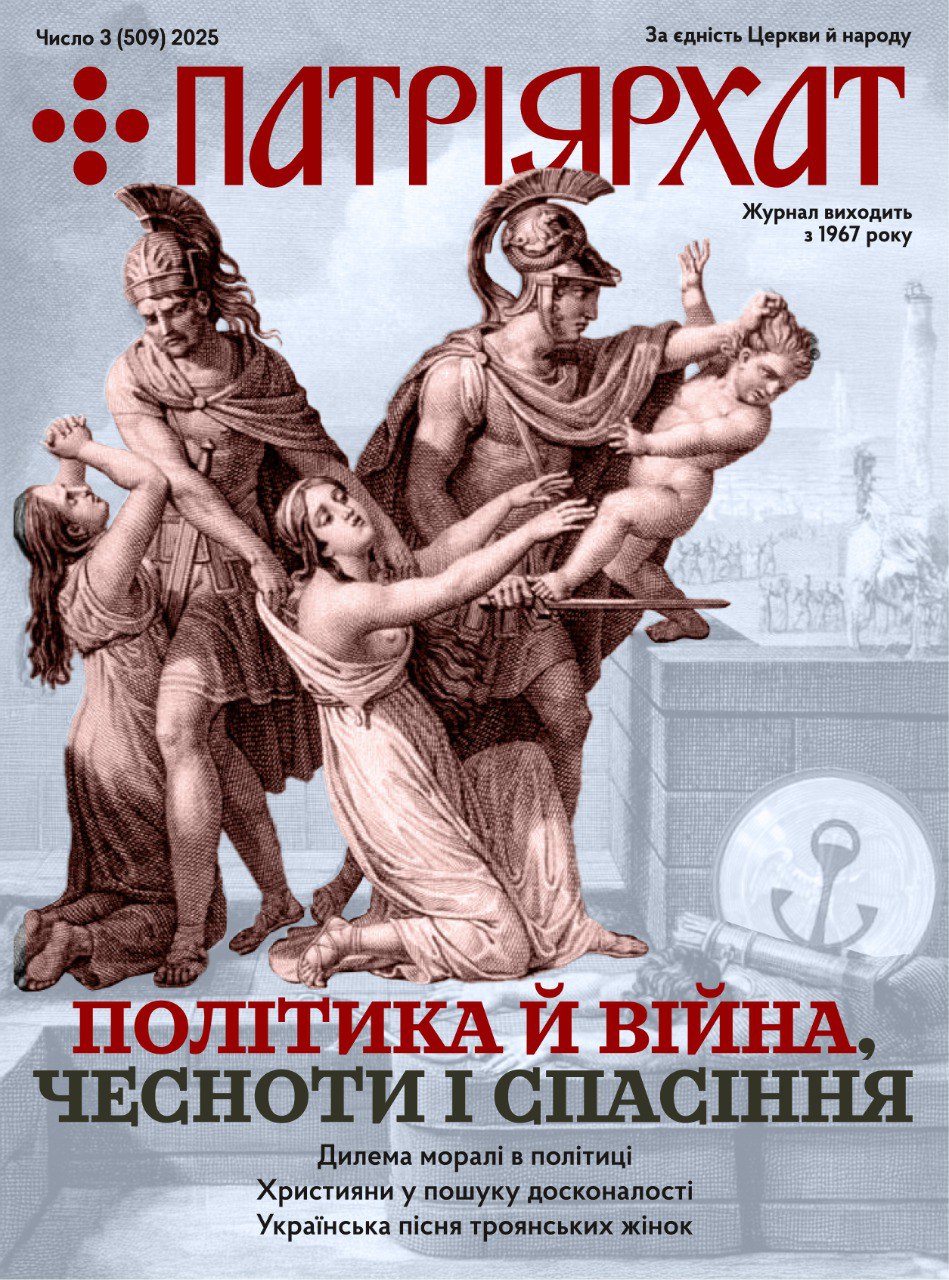Patriarchy move draws Vatican ire, could lead to long-standing rift
By PATRICIA SCHAKBER LEFEVERE
Special Report Writer
Austin, Texas
UKRAINIAN RITE Catholics voiced concern last week that a recent letter from the Vatican’s Congregation for Eastern Churches (CEC) to some Ukrainian bishops regarding the patriarchal movement and the suspension of married priests could seriously damage relations between North American Ukrainian Catholics and Rome and harm the entire Catholic church as well as the ecumenical movement.
The Vatican has reportedly sent a letter to some bishops calling for the suspension of 20 married Ukrainian priests, most of whom have been sent as foreign missionaries to serve Ukrainians in North America.
The Ukrainian rite is one of a number connected with the Roman Catholic church. Each of these rites maintains its own traditions and liturgies. In Europe, about 80 per cent of the nonreligious Ukrainian clergy are married, but, by agreement with the Vatican, those ordained in the United States must remain celibate.
With six million Ukrainian Catholics worldwide — 300,000 living in North America — the Ukrainian church is the largest single Eastern rite body attached to the Catholic church.
The patriarchal movement is an effort within the Ukrainian rite to have its own patriarchy, an effort resisted by Rome.
Some observers say the issues being raised by Rome’s dealings with the Ukrainian church are especially significant because the Ukrainians represent a model of pluralism within the Catholic church to which Anglicans and others look to see how they might preserve their own identity if they unite with Rome.
Father Andrew Chirovsky, 28, pastor of St. Joseph’s Ukrainian Catholic Church in Chicago, called the patriarchal question an “ecclesiastical” issue, not one of nationalism or “pseudo-patriotism” as it is described in the Sept. 17 letter (NCR, Nov. 30). The Ukrainian Catholic church’s right to a patriarchy is spelled out in Vatican Council II statements, he said.
Bohdan Mykytyn, 58, a civil engineer in North Hollywood, Calif., suggested that “someone else (in the Vatican) may have been trying to set something up” because Pope John Paul II was in Canada at the time the letter was sent. Many Ukrainians who spoke with NCR praised the pontiff’s outspoken support during his recent visit.
Speaking in Ukrainian, the pope told Ukrainians in Winnipeg that their church had a special role to play in being the bridge between Roman Catholics and Orthodox. “Coming from the most super patriot Pole the world has ever seen, how can the Vatican tell Ukrainians not to be patriotic?” Chirovsky asked.
However, Maria Tymiak, 62, a homemaker in McCandless, Pa., said she thinks Rome is “playing a game” with the Ukrainians. “The pope faces a lot of problems in Poland and with the Russians. Nobody knows our history and our rite better than he does, but who knows what he would do to benefit his own Polish church?”
Tymiak, whose husband heads the Patriarchal Society in Pittsburgh, remains optimistic even in the wake of the letter. “I have a big positive hope that the pope will find some solution — that he won’t sacrifice us for his church,” she said.
Dr. Oleh Snylyk, 69, a radiologist in Woodland Hills, Calif., laughed at the idea of four Ukrainian bishops writing to Newsweek’s editors to say there had been no Vatican letter, especially after many Ukrainians had seen copies of the Italian letter or its English translation. The existence of the letter was first reported in the Nov. 5 Newsweek.
“Maybe our bishops protest because they were told to protest,” Snylyk said.
Another Ukrainian characterized his church’s bishops as “loyal slaves of Rome.” It was an opinion shared to a greater or lesser degree by many with whom NCR spoke. No wonder, Snylyk said, that during a visit to Philadelphia, Vatican Secretary of State Cardinal Agostino Casaroli asked Ukrainians why they talked of separation. Why didn’t they want to include themselves in the Roman Catholic church? In the midst of centralized attempts to Romanize them, Ukrainians have to fight for their rights, Snylyk said.
“We remain the stumbling block,” said Alexander Pryshlak, a mechanical engineer in New Haven, Conn., who heads the Ukrainian Patriarchal Society in the USA. “There’s pressure on Casaroli and other Vatican diplomats to listen to the Soviets,” he said.
That’s why the Ukrainian patriarchal issue has ramifications beyond the size of its church — only five million of the universal church’s 800 million members, an estimated 3.5 million of these are part of the underground church in the western Ukraine.
Chirovsky said the Ukrainians are disliked by the Orthodox and held of little importance by Rome, “because we’re a hybrid church … neither Latin nor Greek, but a weird hybrid freak,” is a satiric jingle not unfamiliar to Ukrainian ears, he said.
The mixed nature of the church stems from an incoherent system of theology, liturgy and canon law, the priest said. “We explain why statues and icons don’t mix, and then some of our parishes keep statues, because the last pastor liked them, We teach that the Ukrainian liturgy has to be sung,” but on Sunday mornings many masses are recited rather than sung.
“It’s this kind of hybridness that has debilitated us. We’re not offering our youth very much. They can’t make much sense out of this Ukrainian-Latinized mixture, so they become apathetic, drift away,” the pastor said.
Tymiak expressed concern about the growing tendency of mixed marriages among Ukrainian Catholics. Her daughter has married a Roman Catholic. She was raised in Galicia, but the war pushed her to Austria. Since then, she and her Galician husband have lived in Tunisia, Colombia, New Jersey and Pennsylvania. Like the Snylkyks and Mykytyns, they have raised their children bilingually — a tradition that persists among some Ukrainians who are third and fourth generation Americans.
This year the 1 2,000-strong town of Shamokin, Pa. is marking the hundredth year of Ukrainian Catholicism in America. And Ukrainians across the world are preparing to mark the millennium of their church in 1988, when special festivities are planned in Philadelphia and elsewhere.
Most Ukrainians with whom NCR spoke had pastors who were celibate, but all knew some married priests. Often the names of Chicago pastors Father Peter Galadza and Chirovsky were cited for being “good, strong priests” who are married.
Such accolades do not result from a popularity contest, Chirovsky said, but because “people know I’m among the busiest persons in the church and yet have a wife and a year-old daughter.” Chirovsky directs the diocesan religious education program, has founded and manages the diaconate program, teaches at the Catholic Theology Union in Chicago, is a doctoral candidate, chairs the Ukrainian Catholic Religious Education Association of North America, and edits a Ukrainian language catechitical series.
“I challenge any celibate priest to try to live my schedule for two years and see if he can avoid a coronary. I would have gone nuts a long time ago or turned alcoholic were it not for my wife and daughter,” Chirovsky said. “I often feel sorry for a celibate who has to live with a man 30 years his senior or with someone he hates.”
He disagrees with the conventional wisdom that says if celibacy were voluntary, no one would choose it. In his seminary class, three of the six priests ordained with him opted for a celibate life. Chirovsky, ordained by the late Patriarch Josyf Slipyj, does not believe his ordination is in question. “If they try to attack Slipyj’s priests, I predict Armageddon,” he said.
Pryshlak also voiced amazement at the CEC’s request for a list of all so-called ”illicitly ordained” priests. “If Rome knows their names, they shouldn’t ask our bishops for them. If they were suspended, then everyone should already know that they resuspended.”
Defense of the patriarchy and complaints and Vatican interference in Ukrainian affairs have continued more than 20 years. And some Ukrainians believe this latest bout between the Roman bureaucracy and their bishops indicates a worsening of relations. “The entire Catholic church, the Orthodox and the ecumenical movement are watching us and what happens to us,’ Chirovsky said. “Rome is making a terrible mistake if it thinks that because were an inconvenience, it can get rid of us,” he added.
Ousting the Ukrainians would probably end all hopes for Orthodox reunion with the Vatican Though long forgotten by Rome, the East, Chirovsky said, remembers the second crusade when Latin Christians sacked Constantinople, pillaged and desecrated its churches, set prostitutes upon the altar and trampled on the hosts. Even after seven centuries, the cement of trust has yet to dry.
History, culture, language — in short, patriotism, were the reasons Ukrainians said they had resisted assimilation into the Roman Catholic church. Moreover, they felt their special ministry was one of human rights, keeping before the public the Soviet persecution of their church in the Western Ukraine.
How close the lives of U.S. Ukrainians are linked to those of their brothers and sisters in the East was evidenced in a recent letter Chirovsky’s wife received from relatives in the western Ukraine. It read: “Ivan (not his real name) is now eight years old. His parents are angry at us and have taken him far away so that he cannot even write.”
Translated from its cryptic script, the letter told Helena Chirovsky her cousin had been taken away to Siberia for eight years of forced labor.
“How can they expect us to just talk about theology and the life of sweet Jesus when we know and have read and heard that an underground priest, Father Nicholas Gurgula, and his wife were strung up on a tree, had their eyes and tongues cut out, the skin on their backs flayed and were then set afire?” Chirovsky asked.
As if to answer his own rhetorical question, as well as to shed light upon the recent letter to Ukrainian bishops and their denial of it, the priest said: “Secrecy is our greatest enemy.”
National Catholic Reporter
December 7, 1984

